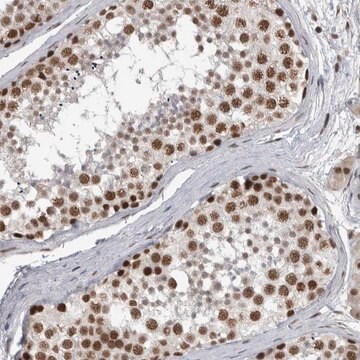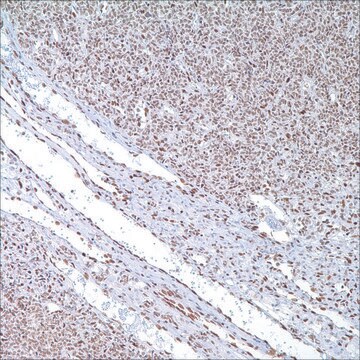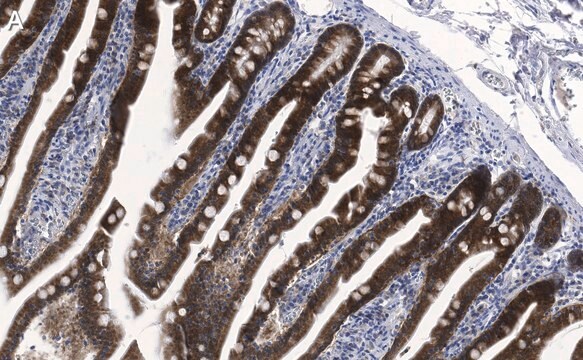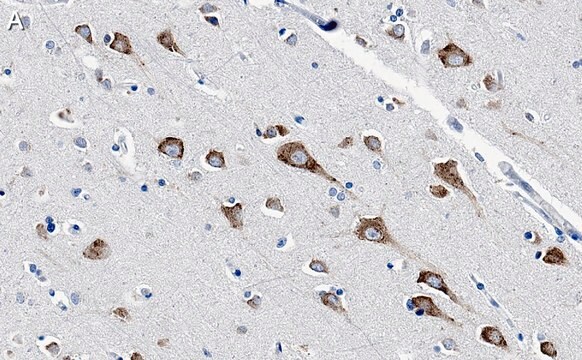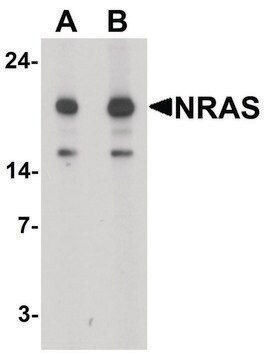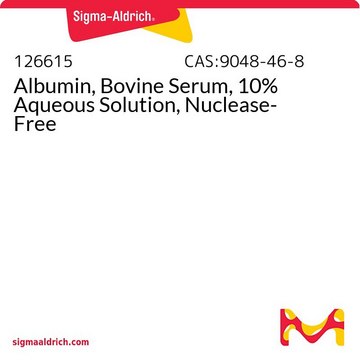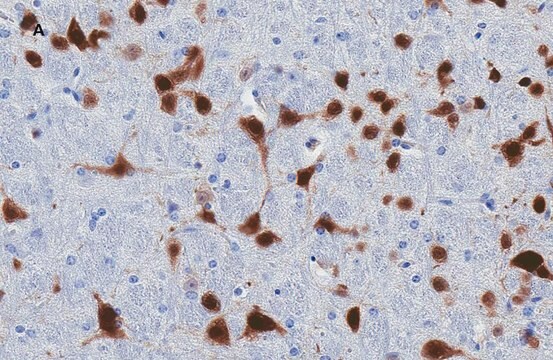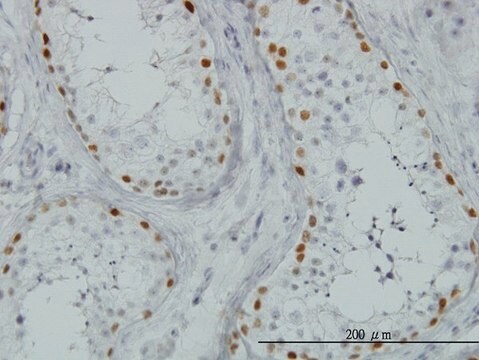General description
We are committed to bringing you greener alternative products, which adhere to one or more of The 12 Principles of Green Chemistry.This antibody is Preservative-free, produced without the harm or sacrifice of animals and exceptionally stable to allow for ambient shipping and storage if needed and thus aligns with "Waste Prevention", "Designing Safer Chemicals" and "Design for Energy Efficiency".
Click here for more information.
ZooMAb® antibodies represent an entirely new generation of recombinant monoclonal antibodies.Each ZooMAb® antibody is manufactured using our proprietary recombinant expression system, purified to homogeneity, and precisely dispensed to produce robust and highly reproducible lot-to-lot consistency. Only top-performing clones are released for use by researchers. Each antibody is validated for high specificity and affinity across multiple applications, including its most commonly used application. ZooMAb® antibodies are reliably available and ready to ship when you need them.
Specificity
Clone 3B12 is a ZooMAb® rabbit recombinant monoclonal antibody that specifically detects H-Ras. It targets an epitope within 18 amino acids from the C-terminal region.
Immunogen
KLH-conjugated linear peptide corresponding to 18 amino acids from the C-terminal region of human H-Ras.
Application
Quality Control Testing
Evaluated by Western Blotting in Human brain tissue lysate.
Western Blotting Analysis: A 1:1,000 dilution of this antibody detected H-Ras in Human brain tissue lysate
Tested applications
Western Blotting Analysis: A 1:1,000 dilution from a representative lot detected H-Ras in KNRK and Mouse Brain lysates.
Enzyme Immunoassay (ELISA) Analysis: A serial of dilutions from a representative lot detected full-length recombinant Human H-Ras.
Affinity Binding Assay:: A representative lot of this antibody bound H-Ras with a KD of 1.9 x 10-9 in an affinity binding assay.
Note: Actual optimal working dilutions must be determined by end user as specimens, and experimental conditions may vary with the end user
Evaluated by Western Blotting in Human brain tissue lysate.
Western Blotting Analysis: A 1:1,000 dilution of this antibody detected H-Ras in Human brain tissue lysate.
Target description
GTPase HRas (UniProt: P01112; also known as EC:3.6.5.2, H-Ras-1, Ha-Ras, Transforming protein p21, c-H-ras, p21ras) is encoded by the HRAS (also known as HRAS1) gene (Gene ID: 3265) in human. The RAS oncogene family consists of three members, HRAS, KRAS, and NRAS that encode membrane-associated proteins involved in mediation of signals arising from cell-membrane receptor tyrosine kinases and G-protein-coupled receptors along the MAPK, PI3K/AKT and other signaling pathways. Ras proteins bind GDP/GTP and possess intrinsic GTPase activity. H-Ras is widely expressed small G-protein that is synthesized with a propeptide (aa 187-189), which is subsequently cleaved off to produce the mature form that alternates between an inactive form bound to GDP and an active form bound to GTP. It is activated by a guanine nucleotide-exchange factor (GEF) and is inactivated by a GTPase-activating protein (GAP). The active GTP-bound form is localized most strongly to membranes than the inactive GDP-bound form. Acetylation at lysine 104 is reported to prevent interaction with GEFs. H-Ras is known to undergo palmitoylation at cysteines 181 and 184, directly upstream of the CAAX motif, as the final step of its activation prior to membrane localization. H-Ras contains a highly conserved G domain (aa 1-165) and a hypervariable region (aa 166-185). The G domain contains the vital switch I and II domains within its effector lobe (aa 1-86), an area that is conserved across all Ras isoforms. This region is responsible for allowing Ras to interact with effector protein pathways, primarily Raf-MEK-ERK and PI3K/AKT, to mediate cell growth, survival, and proliferation. This domain also the most common sites (G12, G13, and Q61) of Ras oncogenic mutations. The three RAS genes account for the most frequently mutated oncogene family in human cancers. This ZooMAbZooMAb® recombinant monoclonal antibody, generated by our propriety technology, offers significantly enhanced specificity, affinity, reproducibility, and stability over conventional monoclonals. (Ref.: Shu, L., et al. (2020). Mol. Cancer Ther. 19(4); 999-1007).
Physical form
Purified recombinant rabbit monoclonal antibody IgG, lyophilized in PBS, 5% Trehalose, normal appearance a coarse or translucent resin. The PBS/trehalose components in the ZooMAb formulation can have the appearance of a semi-solid (bead like gel) after lyophilization. This is a normal phenomenon. Please follow the recommended reconstitution procedure in the data sheet to dissolve the semi-solid, bead-like, gel-appearing material. The resulting antibody solution is completely stable and functional as proven by full functional testing. Contains no biocide or preservatives, such as azide, or any animal by-products. Larger pack sizes provided as multiples of 25 μL.
Reconstitution
300 μg/mL after reconstitution at 25 μL per vial. Please refer to guidance on suggested starting dilutions and/or titers per application and sample type.
Storage and Stability
Recommend storage of lyophilized product at 2-8°C; Before reconstitution, micro-centrifuge vials briefly to spin down material to bottom of the vial; Reconstitute each vial by adding 25 μL of filtered lab grade water or PBS; Reconstituted antibodies can be stored at 2-8°C, or -20°C for long term storage. Avoid repeated freeze-thaws.
Legal Information
ZooMAb is a registered trademark of Merck KGaA, Darmstadt, Germany
Disclaimer
Unless otherwise stated in our catalog or other company documentation accompanying the product(s), our products are intended for research use only and are not to be used for any other purpose, which includes but is not limited to, unauthorized commercial uses, in vitro diagnostic uses, ex vivo or in vivo therapeutic uses or any type of consumption or application to humans or animals.

